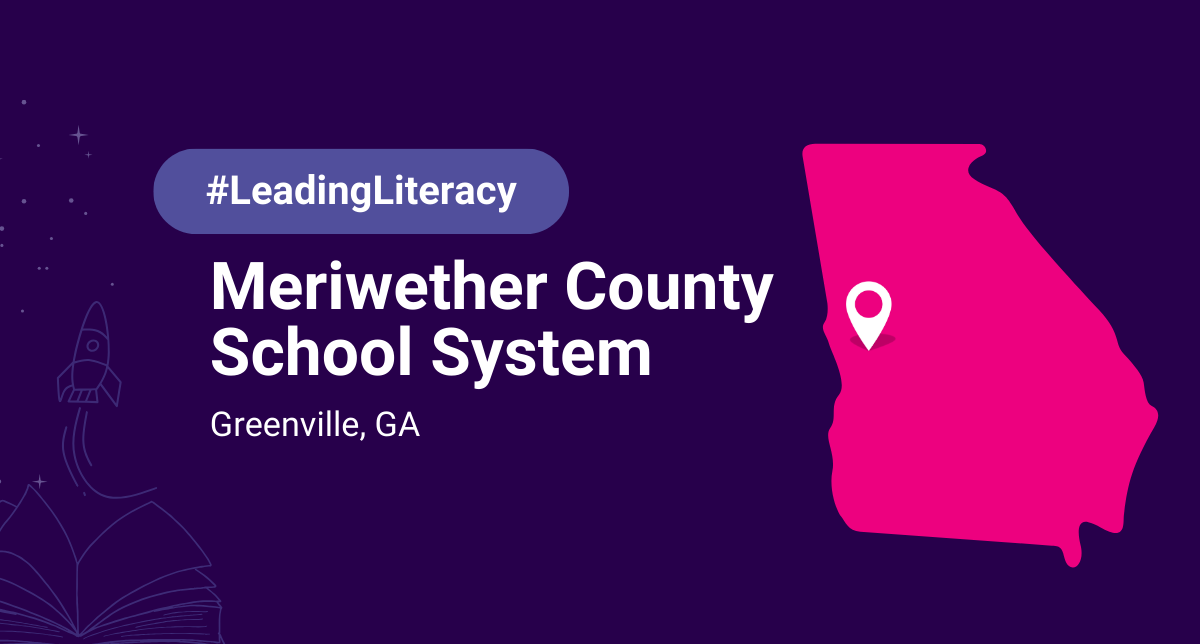The Ohio reading plan kicked into action by legislators in the Buckeye State has had a major impact on how kids learn to read across the state. From new curriculum requirements to mandatory teacher training, these reforms are reshaping literacy instruction from Akron to Youngstown.
If you’re an educator in Ohio, you’ve felt the impact already.
You may also feel like you’re stuck swimming in a sea of programs, initiatives, projects, and mandates that are all centered around literacy.
Consider this your life raft.
We’ve broken down each program for you and created a list of helpful resources for Ohio districts and school leaders and teachers.
What’s next for ReadOhio? What about Ohio’s Plan to Raise Literacy Achievement, Ohio’s Third Grade Reading Guarantee and Dyslexia Support Law? How are all these plans tied to the Science of Reading? What does my district have to do next?
Read on for an explanation of the various Ohio reading plans that districts must comply with, the latest on literacy grants for schools, plus a look at the latest reading achievement scores for Ohio students.
Where It Started: Ohio Governor’s Literacy Challenge
Before we can talk about the new literacy mandates for Ohio districts, we need to talk about where we started.
Ohio Governor Mike DeWine unveiled his Governor’s Literacy Challenge back in March 2023 with an eye on supporting literacy achievement for all students.
“Ohio’s ultimate goal is that every student become a proficient reader, meaning reading
at or above grade level.”
Ohio Governor Mike DeWine,
Executive order announcing the Governor’s Literacy Challenge
At the time, DeWine’s Literacy Challenge had just four steps for the state to help achieve the goal:
- Develop a state program to recognize schools that are a) demonstrating strong implementation of best instructional practices aligned to the Science of Reading and b) where students are making significant progress in reading.
- Collaborate with the Dolly Parton Imagination Library of Ohio to form recommendations for ongoing public-private partnerships aimed at encouraging reading.
- Establish strategies for increasing parental and family involvement in teaching and encouraging reading.
- Create a strategy with measurable goals for improving reading.
Ohio Reading Scores
DeWine’s initiatives all tie back to Ohio reading scores — the topic that’s been dominating the conversations in Columbus for the past several years.
A peek at the state’s National Assessment of Educational Progress (NAEP) scores for 4th grade reveals reading proficiency has been on a downward slope since 2017. Ohio kids are faring slightly above national averages in reading — but not by much.
The average score for 4th graders nationwide was 214 on the 2024 test. For kids in Ohio, it was 216.
The test also revealed just 32 percent of Ohio 4th graders are proficient readers — down 3 percent from 2022.
Nearly two-thirds of Ohio’s 4th graders are unable to read proficiently.

Diving deeper into the data, you’ll find large achievement gaps between Ohio students from marginalized and disenfranchised groups as compared to their peers:
- Ohio’s Black 4th graders had an average score that was 31 points lower than that of white students.
- The average scores earned by Hispanic students were 23 points lower than their white classmates.
- Ohio students who were identified as economically disadvantaged had an average NAEP reading score that was 27 points lower than the scores of their peers who were not identified using the economic classification.
Where It’s Going: ReadOhio — The New Ohio Reading Plan
Of course, the Governor’s Literacy Challenge was just the beginning.
Just months after it was announced, DeWine’s challenge morphed into ReadOhio, a literacy initiative DeWine launched in August 2023 after securing bipartisan support in the state’s legislature in July that same year to mandate that school districts shift literacy instruction to the Science of Reading.

HQIM Adoption
As of June 15, 2025, 82 percent of Ohio districts reported to the Department of Education and Workforce that they were fully aligned to the state’s HQIM expectations.
Another 9.8 percent reported partial alignment.
New ReadOhio Requirements for 2025
Under House Bill 96, a new set of Science of Reading-related training rules went into effect on September 2025:
Who Must Complete Training
All teachers, administrators, school psychologists, and speech-language pathologists employed by your district
Two Types of Required Training
- Introductory Training — Basic introduction to the Science of Reading
- Competency-Based Training — Updates and reinforces Science of Reading knowledge and skills
Requirements for Teachers & Administrators Already Employed (hired before July 1, 2025)
- Complete the competency-based training by June 30, 2030
- Repeat every 5 years after that
Requirements for Teachers & Administrators Hired Starting July 1, 2025
- Complete introductory training within 1 year of hire date
- Complete competency-based training every 5 years thereafter
- Exemption: New hires don’t need the introductory training if they completed similar training or appropriate coursework within the past 5 years (must be verified by superintendent)
Requirements for School Psychologists & Speech-Language Pathologists
- Complete introductory training by June 30, 2027
- Complete competency-based training every 5 years thereafter
The Good News — Training hours will count toward educator licensure renewal requirements, and extra hours earned can roll over to the next license renewal period.

These updates are all in addition to previous legislation that already requires districts:
- Teach students using curriculum and instructional materials that align with the Science of Reading and appear on a state-approved list.
- Ensure all teachers and administrators undergo professional development in the Science of Reading, completing a course provided by the Department of Education and Workforce no later than June 30, 2025.
- Implement evidence-based reading intervention programs.
- Change all reading assessments to tools that are evidence-based and appear on a state-approved assessment list.
- Provide high-dosage tutoring for all students in kindergarten through 4th grade who are on reading improvement and monitoring plans.
Ohio schools are also now banned from using any core curriculum, instructional materials, or intervention programs that make use of the three-cueing method — a strategy that has been widely debunked by scientists — to teach reading in kindergarten through 5th grade.
In addition to the mandate from the original Governor’s Literacy Challenge, ReadOhio now encompasses a number of different literacy-focused programs and initiatives. Some of those programs started under Ohio’s 2012 Striving Readers State Literacy Plan: Reading into the Future which first established a literacy development framework for the state.
Ohio’s Third Grade Reading Guarantee
One of the programs that initially fell under the Striving Readers Literacy Plan is Ohio’s Third Grade Reading Guarantee, a program introduced in 2013 by then Governor John Kasich. The guarantee tied 3rd graders’ promotion to 4th grade to their reading score on a standardized state test and required schools to provide intensive interventions to help retained students catch up with their peers.
Ohio Department of Education data shows nearly 40,000 3rd graders were held back due to their reading scores from 2013 to 2019. This program is not without controversy – a study of the Ohio Guarantee completed in 2018 by Ohio State University researchers showed “no clear pattern” of improvement due to mandatory retention. The state suspended mandatory retention from 2019 to 2022 due to the COVID-19 pandemic, but the Guarantee was brought back in 2023 and now falls under ReadOhio.
Although it’s similar to the 2013 plan, there are some key differences that are now in effect for districts and schools in the state:
- Ohio parents are now allowed to decide if their 3rd grader should be retained or move on to 4th grade, regardless of their reading performance.
- Districts and schools must now administer reading diagnostics that are aligned with the Science of Reading and come from the state-approved list or use the state-developed diagnostic.
- All districts and community schools must create a Reading and Improvement Plan (RIMP) for any student in grades K-3 who is reading below grade level within 60 days of receiving the reading diagnostic results.
- Ohio schools must supply at least 50 hours of high-dosage tutoring over the course of 36 weeks to close decoding gaps for every student with a RIMP.
Ohio’s Plan to Raise Literacy Achievement
Another program that now falls under the ReadOhio umbrella is Ohio’s Plan to Raise Literacy Achievement, which was first created in January 2018 and updated in 2019 with the help of a State Literacy Team. The plan called for the State of Ohio and individual schools to make a series of changes, including:
- Focusing on differentiated core instruction and a multi-tiered system of supports that aligns to the Science of Reading
- Ensuring 3rd graders retained under the Third Grade Reading Guarantee receive interventions grounded in scientific evidence to ensure progress toward proficient reading
- Integrating Ohio’s K-12 Social and Emotional Learning Standards into literacy instruction
- Promoting collaboration among educators, such as content area teachers and intervention specialists
- Developing goals and strategies for supporting families in their critical roles in children’s literacy development
While this plan established a push toward the Science of Reading, at the time, the state did not require schools to make the changes to evidence-based instruction, nor did it require a change in how teachers themselves are trained. Now, under ReadOhio, schools must choose curricula from a pre-approved state list.
Ohio’s Dyslexia Support Laws
Ohio passed legislation in 2021 that guarantees support for students with dyslexia, then followed up on their initial dyslexia support law with additional requirements in 2023 that fall beneath the state’s overall reading plans.
- Districts are required to screen all students for dyslexia between the second half of a student’s kindergarten year and the first half of 1st grade.
- Districts must use a screening tool from the state’s approved list of assessments.
- K-3 teachers and special education teachers across all grade levels must now meet specific dyslexia professional development requirements.
Helpful Links for Ohio Educators
For District and School Leaders
- State of Ohio Approved High-Dosage Tutoring Vendors
- Ohio’s Approved List of Core Curriculum and Instructional Materials
- State-Approved Assessments and Screening Tools
- Ohio House Bill 583 — The bill that includes ReadOhio mandates
For Teachers
- The ReadOhio Literacy Academy
- Ohio’s Dyslexia Support Law Professional Development Requirements
- State Learning Standards for English Language Arts






